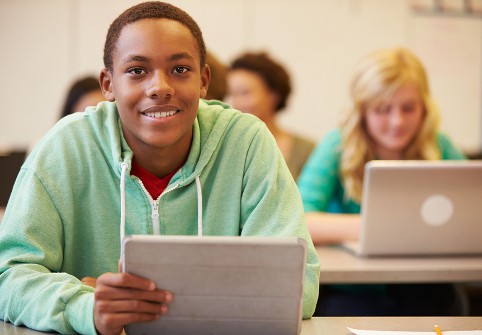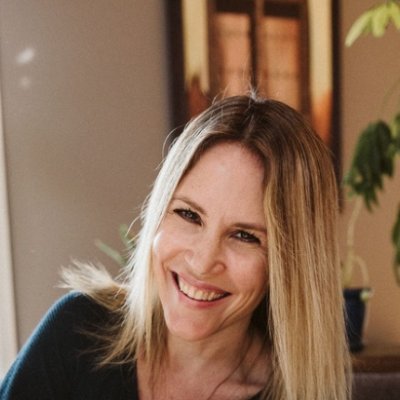9 Resolutions & 9 Resources for Your Project-Based Learning Classroom This Year

If you are teaching in a Project-Based Learning (PBL) classroom or aspire to bring high quality PBL to your classroom or school, we bring you nine resolutions to follow for creating engaging and effective projects in the new year. Follow these resolutions and you will be on your way to activating students’ interests and building a strong culture to support high quality, gold standard PBL in your classroom or school.
Resolve to assess student learning, both formatively and summatively.
We almost always have some sort of summative assessment. In successful PBL classrooms, teachers don’t wait for deliverable or final product. Ron Berger of Expeditionary Learning says, “If the teacher isn’t assessing all along the way, then the final product will not typically show the high quality of success.” He explains, “You don’t want to undermine the quality of the final product by taking away the scaffolding, but you want a sense of individual student levels of understanding throughout that flow.” Ron suggests building in smaller assessments, in some cases on demand assessments, at multiple times before the final project: “Don’t wait; check along the way.”
It’s amazing what can be learned from students in just 5 minutes. A “turn and talk” or an exit ticket can be one quick way of assessing progress. For more ideas, see Authentic Assessment: What You Can Do in 5 minutes, 5 days, 5 months, 5 years.
Resolve to be project managers (and teach the students how to be project managers).
Teachers should teach students how to chunk down bigger projects into daily tasks. Project management tools can help. Teachers can help students organize schedules and tasks, and set deadlines to keep things moving.
Use this project planner (or find one that works well and then build in time to teach students how to use it).
Resolve to reflect.
I had a sign in my PBL classroom that said: “Reflection isn’t just for mirrors.” When my students took the time to reflect at the conclusion of a project, they learned more about themselves, their own strengths (and struggles) and each other through the reflection process.
Use Gallery Walks as a tool for reflection. Encourage the use of protocols, the public sharing of work and peer feedback as a way to create a culture of PBL and reflect on the work.
Resolve to let students have voice and choice.
The most important shift in a PBL classroom is what happens at the student level. Students can take the lead by tracking their own projects using project management tools and skills. According to John Larmer, editor in chief at Buck Institute for Education (BIE), an organization devoted to spreading gold standard Project Based Learning, in his blog about student voice and choice: “Having a say in a project creates a sense of ownership in students; they care more about the project and work harder.”
Check out the Building a PBL Culture in the Classroom blog. It includes tips for activating voice and choice.
Resolve to make projects count.
Use standards to plan projects and make sure they address core content knowledge. In a rigorous project, students are activating and learning standards-aligned content, while building 21st century skills such as collaboration and critical thinking and meeting other deeper learning outcomes.
Many of the existing resources teachers use to align lessons and units to standards can be applied to designing projects too. Check out online project libraries, searchable by course/content, to find standards-focused project ideas. There’s this Google Hangout featuring BIE’s national faculty and Larmer discussing standards-aligned projects.
Resolve to tap adult experts and mentors as part of the process.
Teachers engage in helping students connect to adult mentors who can support the project process. As Sam Seidel, author of Hip Hop Genius, suggested in his keynote at PBL World (a conference that brings educators together to immerse themselves in all things PBL), adults in the real world who support projects help make them MORE real.
Read this piece by John Larmer about how students make their work public by collaborating with outside experts during a project. Experts can act as content experts, mentors, and even “clients” for real-world projects. They can provide real-world critique to improve students’ products. At the end of a project, experts can ask students questions during presentations that a teacher or other students might not ask.
Resolve to include student interests.
A project is more engaging — and lead to more powerful learning — if students find it personally meaningful. If they care about the topic, the products they choose to create, or the real-world issue or problem they’re tackling, students care more about doing high-quality work. Writes Larmer, “a project can have personal authenticity when it speaks to students’ own concerns, interests, cultures, identities, and issues in their lives.”
Watch Most Likely to Succeed, a new film about student-centered learning and hold a discussion with other educators and even students about student-centered approaches to learning!
Resolve to share it and show it.
You and the students can decide how students will share their work publicly. We love ideas such as posting an article on a blog, presenting in a performance-based assessment, publishing or creating an online portfolio of work.
Transform your PBL Classroom with the 4 P’s: posting, presenting, publishing and portfolio.
Resolve to be resourceful.
Engage in meaningful professional learning, whether through attendance at specific PBL workshops, in a professional learning community, or through your own online explorations. Make sure your work is related to your own professional growth plan, and then be prepared to share your learning with other staff members to grow the PBL culture at your school.
There is a website called PBLU with many K-12 “ready to go“ projects you can use in your classroom.
If you are interested in learning more about gold standard PBL, check out BIE resources and upcoming PBL professional learning opportunities: What are your resolutions for your PBL classroom or school this year? Comment below and share your PBL resolutions and comments at #PBL.
For more on project-based learning, see:
- Must Know Buck-Institute Resources for Project-Based Learning
- Smart Review | Transforming Schools Using Project-Based Learning, Performance Assessment, and Common Core Standards
- 10 Powerful Project-Based Learning Engagement Strategies
Stay in-the-know with all things EdTech and innovations in learning by signing up to receive the weekly Smart Update. This post includes mentions of a Getting Smart partner. For a full list of partners, affiliate organizations and all other disclosures please see our Partner page.








0 Comments
Leave a Comment
Your email address will not be published. All fields are required.